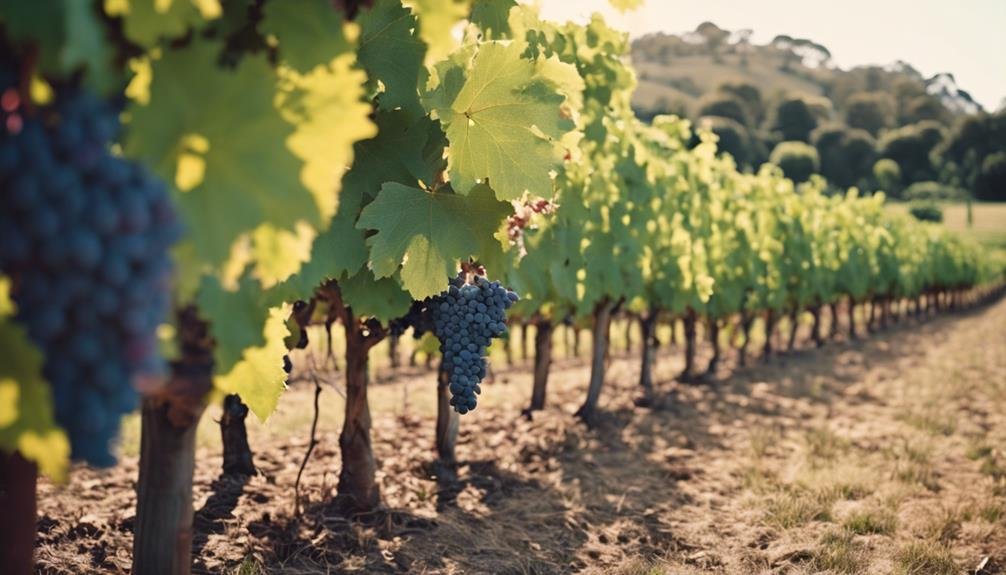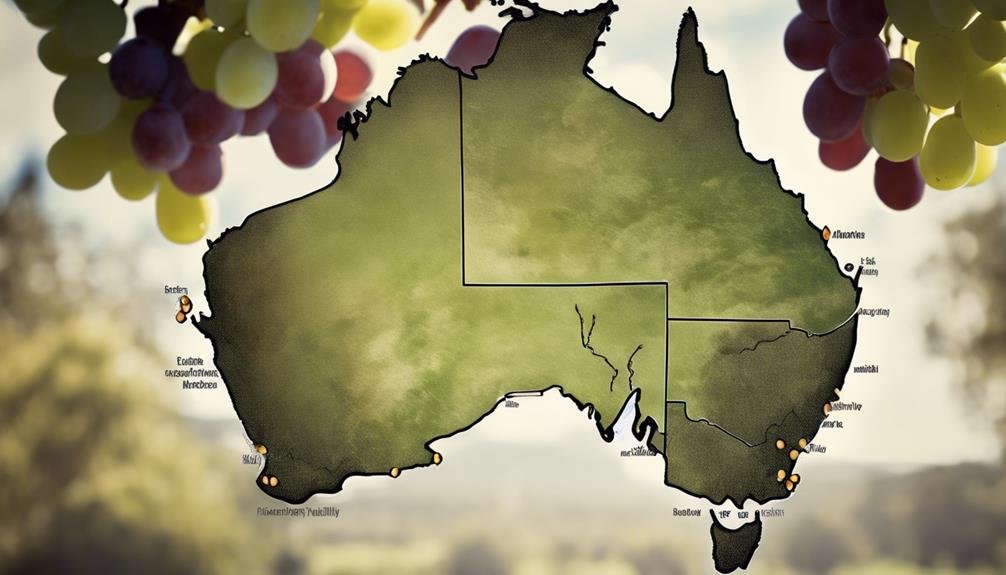Discover Australia's diverse wine regions like South Australia, known for Shiraz and Chardonnay, and Victoria for Pinot Noir. Barossa Valley boasts prestigious wine production, while Clare and Eden Valleys excel in white wines. Popular grape varieties include Shiraz, leading in exports, and versatile Chardonnay blends. Australia embraces sustainable winemaking trends like organic and biodynamic practices, appealing to eco-conscious consumers. Uncover a rich tapestry of grape varieties and regions in Australia, offering wine enthusiasts a journey into the country's vibrant oenological landscape.
Key Australian Wine Regions
Renowned for their diverse terroirs and distinct wine styles, the key Australian wine regions showcase the country's rich viticultural heritage and innovative winemaking techniques. Climate influences and soil types play an essential role in shaping the unique characteristics of Australian wines.
South Australia stands out as a major region, with warmer climates favoring varieties like Shiraz and Chardonnay. Victoria, on the other hand, is known for its cool climate-loving Pinot Noir. These regions not only offer exceptional wine experiences but also boast vibrant wine tourism opportunities, allowing visitors to explore picturesque vineyards, indulge in local cuisine, and immerse themselves in Australia's rich winemaking traditions.
From the prestigious Barossa Valley to the white wine havens of Clare Valley and Eden Valley, Australian wine regions offer a diverse and enriching experience for wine enthusiasts.
Popular Grape Varieties in Australia
Notable for their diversity and quality, Australian vineyards cultivate a range of popular grape varieties that play a vital role in the country's vibrant wine industry.
Shiraz remains a standout, with a dynamic evolution reflecting consumer preferences. This robust red grape variety continues to lead Australian wine exports and domestic consumption, showcasing the country's winemaking prowess.
Additionally, Chardonnay blends have gained traction, offering a harmonious balance of flavors that appeal to a wide audience. The versatility of Chardonnay allows winemakers to create a spectrum of styles, from crisp and invigorating to rich and buttery, catering to diverse palates.
As trends shift and new techniques emerge, these classic grape varieties maintain their prominence in Australia's ever-evolving wine landscape.
Emerging Wine Trends in Australia

What innovative developments are shaping the future of Australian winemaking practices and consumer preferences?
The wine industry in Australia is witnessing a shift towards sustainable practices and natural winemaking. Wineries are increasingly adopting environmentally friendly measures in their vineyards and production processes, such as organic and biodynamic farming techniques.
Consumers are showing a growing interest in wines made with minimal intervention, showcasing the unique characteristics of the grapes and terroir. This trend towards natural winemaking aligns with the global movement towards more transparent and eco-conscious products.
As Australian winemakers continue to explore and embrace these practices, they are not only meeting the demands of a changing market but also contributing to the preservation of the environment for future generations.
Frequently Asked Questions
How Does Australia's Wine Industry Contribute to the Country's Economy?
Australia's wine industry greatly impacts the country's economy through its strong economic contributions and thriving export markets. The sector's growth and diversification efforts, alongside its renowned grape varieties, have solidified Australia's position as a prominent player in the global wine market.
What Are Some Unique Winemaking Techniques Used in Australian Vineyards?
Australian vineyards employ wild fermentation and minimal intervention techniques to showcase terroir. Biodynamic practices and amphora aging are also embraced, enhancing the unique character of Australian wines. These methods reflect a commitment to quality and sustainability.
Are There Any Significant Challenges Faced by Australian Wine Producers?
Climate change poses a significant challenge for Australian wine producers, impacting grape yields and altering traditional growing regions. Additionally, managing volatile export markets adds complexity to industry dynamics. Balancing these factors requires adaptability and strategic planning for sustained success.
How Does Australias Wine Production Compare to Other Major Wine-Producing Countries?
Australia's wine production, known for Shiraz and Chardonnay, competes globally with 1.46 billion bottles annually. Climate diversity and terroir drive growth in regions like South Australia, New South Wales, and Victoria. Diversifying to Cabernet Sauvignon, Pinot Noir, and Sauvignon Blanc keeps Australian wines competitive.
What Role Does Sustainability Play in the Australian Wine Industry?
Sustainability is integral to the Australian wine industry, with a focus on minimizing environmental impact. Through sustainable practices like water conservation, organic farming, and biodiversity preservation, Australian winemakers aim for a balance between economic viability and environmental stewardship.
Conclusion
To sum up, Australia's wine industry is a thriving tapestry of diversity and innovation, with South Australia leading the charge in production.
One fascinating statistic is that Australia produces 1.46 billion bottles of wine annually, showcasing the country's commitment to quality and excellence in winemaking.
This impressive figure highlights the significant impact of Australian wine on the global market and underscores the industry's continued growth and success.
